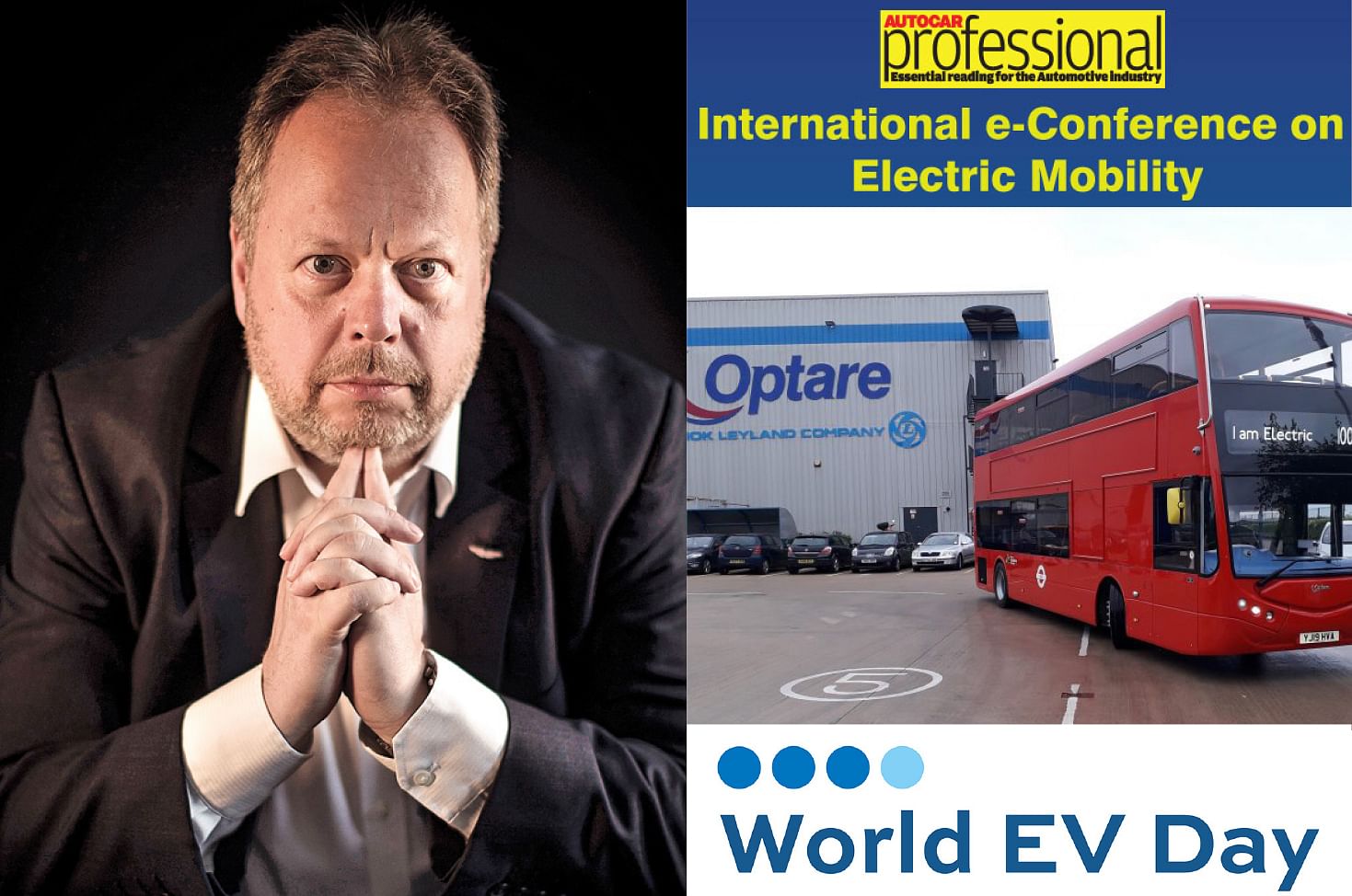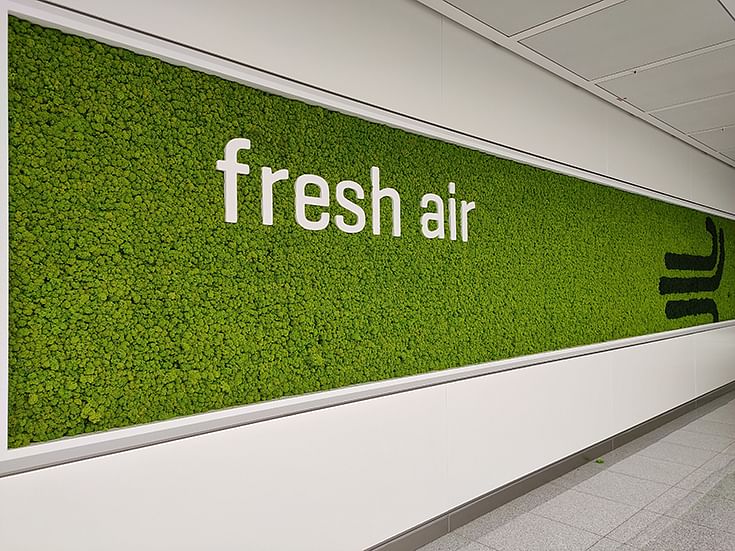Charting the EV market potential on World EV Day
Though most of the experts were unanimous in expecting a 10 percent plus EV conversion over 4-5 years, there are concerns still about development of a robust EV ecosystem.
The global electric car market recorded another year of growth in 2019. An estimated 2.1 million electric cars were sold during the year, according to Swiss EV charging infrastructure supplier Virta. Along with the EV industry, the global charging network is also expanding. The network grew from 2.1 million chargers in 2018 to 7.3 million chargers last year. On World EV Day on September 9, Autocar Professional hosted the first ever International e-Conference on ‘Electric Mobility – Scaling up in the Midst of Challenges’

Highly accomplished industry leaders from India and overseas discussed and deliberated on how the industry can scale over the challenges on the path of e-mobility. Ashwani Gupta, COO, Nissan Motor Corporation, delivered the keynote address and Dr Andrew Palmer, Chairman, Optare Plc was the guest of honour.

There were two independent sessions and included Industry leaders like Henrik Fisker, Founder, chairman & CEO, Fisker Inc, Kishor Patil, CEO, KPIT Technologies, Naveen Munjal, MD, Hero Eco Group, and President, SMEV, Anand Kulkarni, Product Line Director - Electric Vehicle & ALFA Architecture - Passenger Vehicle Business Unit, Tata Motors, Sulajja Firodia Motwani,

founder & CEO, Kinetic Green, Rajeev Chaba, MD & President, MG Motor India, Chetan Maini, Co-founder & Vice-Chairman, Sun Mobility, Vinnie Mehta, Director General, ACMA and Hormazd Sorabjee, Editor, Autocar India.
The e-Conference touched upon various aspects of the EV ecosystem and the future prospects of electric vehicles given the current dynamics.
Ashwani Gupta: “When the battery costs drop below 95 dollar per kWh we will have reached the tipping point”

The keynote speaker was Ashwani Gupta, COO, Nissan Motor Corp. According to Gupta, “Evolution in mobility triggered by three transformations- social, customer and technology. Megatrends are the outcome of key social challenges like global warming, taking care of ageing population and pressures of urbanisation.”
Gupta believes that the life of the EV battery plays a big role in the connected vehicle ecosystem, the challenge is not the cost of the battery, but the value it brings to the society. Giving an example of how EVs can be used to power one’s home, feed power to the grid among other things, he said “EVs need to an integrated part of the society, when they need it.”
2010 to 2020: Key learnings in the evolution of EVs
Given the fact that Nissan was the first mover in the mass-volume in the EV space, Gupta traced the decade long journey, “ The only motivation behind was to challenge the innovation, that excites, to bring the first EV on road. Since then our priority was not business case, but customer experience.”
So how should new players in the space brace up for the challenge? Well, Gupta points that, “My definition for EV is very simple, if you want to do it as a objective to talk about CAFÉ or emission, then you will end up building a dull product. It is about the consequence; it is about customers perceiving the value which is much more than what expected from the norms. The day we cross the tipping point, the customer will be willing to pay for the EV and experience the joy.”
So when can you expect the tipping point for the industry, especially with ICEs getting expensive, and EVs costing lesser? Gupta explains that there are two ways of looking at it, the cost and value side—“When the battery costs drop below US$95 per kWh we will have reached the tipping point.”
In his ending note he said it was important “To transform the way we live, drive, for the society, humans, which means we need to have humans at the centre of it.”
Andrew Palmer: ‘Adopt a Darwinism approach for EVs’

Dr Andrew Palmer, Chairman, Optare Plc was the guest of honour at the e-mobility conference. Tracing the journey of EVs thus far, the move towards EV, a cleaner and reduced human impact environment have proved to be inevitable. Also, the route to EV is expected to be more disruptive than any other event in the auto industry.
That said, Palmer believes that, “We should not legislate EVs but adopt a Darwinism approach and enjoy the best of all. EV allows for easier entry digital disruptions that are led by technology companies. The barriers are now lower and hence we see a significant rise in battery manufacturers in China and the US. The primary sale of EV sales is positive. But, as of 2019 only 2.5% of vehicles run on electricity. This proves us that we have a long road ahead,” Palmer states.
“The battery technology will evolve quickly through various derivatives of Lithium-ion etc and reach the solid-state by 2030. The ideas on fuel cells are less clear now. In reality, the transformation to EV requires huge investment too. The change is starting to gain real momentum. In 2019, there were 2.26 million units of light electric vehicles globally. This is nine percent higher than in 2018. In public transport, the forecast indicates approximately 40 percent of new city buses in Europe will be BEV by 2025. Countries like Netherlands are the quickest and China is far ahead than the rest. We expect the buses to go 100 percent electric in cities in the near future. The Chinese have a home market advantage and they have the scale,” he said.
Speaking about various segments, Palmer pointed out that, “Many companies cannot afford the change and it has started to happen. It is going to force the industry to pace the change. There is a revolution in the two-wheeler market as the last mile connectivity is a huge winner. By 2030, mainly the scooter segments are expected to grow much quicker. CV business is also going to change as fuel cells are making an impact. In urban areas buses are going to be a perfect fit.”
Scope for collaboration
Given the dynamic role of electric buses and shared mobility dynamics, Palmer also hinted on scope of collaboration between Ashok Leyland and Optare, “See scope of closer collaboration between Optare Group and Ashok Leyland for electric buses in time to come.” Recently in their AGM, leading commercial vehicle manufacturer Ashok Leyland revealed it has ambitious plans for the electric vehicle (EV) segment in the short to medium term. This will see a wide range of developments in the EV for both passenger and LCV.
The EV roadmap in a post-Covid world

The e-mobility conference also include two sessions on various aspects of the EV ecosystem. The topic for the first session was, ‘Can EVs step up the game in the post Covid era?’ The star studded list of speakers included
- Henrik Fisker, founder, chairman & CEO, Fisker Inc
- Anand Kulkarni, Product Line Director – Electric Vehicle & ALFA Architecture - Passenger Vehicle Business Unit, Tata Motors
- Naveen Munjal, MD, Hero Eco Group, and President, SMEV
- Kishor Patil, CEO, KPIT Technologies
It was moderated by Autocar Professional’s Sumantra B Barooah.
Henrik Fisker, founder, chairman & CEO, Fisker Inc kicked off the discussion highlighting the importance of collaboration to aid greater EV adoption, “Over next 3-5 years, EVs may struggle to be competitive on account of the large batteries and range anxiety. Collaboration and creating value together are crucial.”
According to Fisker, earlier there used to be race amongst manufactures of ICE vehicles over coming out with engines that have higher Horsepower. However, with EVs, the race has now moved towards range. “There is a race for who can make an EV with the longest range” Fisker continued.
Seconding Fisker on the issue, Kishor Patil, CEO, KPIT Technologies said, “Outside there is collaboration that will allow the OEMs to source components. Otherwise it is very expensive”. According to Patil, “profitability is still a challenge across the EV manufacturers and therefore is necessary to develop the ecosystem and the software support is crucial for greater and affordable EV adoption.”
According to Anand Kulkarni, Product Line Director – EV & ALFA Architecture - PV Business Unit, Tata Motors the current pandemic has helped in creating awareness about the benefits of a cleaner environment. “Expect 25-30 percent growth in the EV segment on a year-on-year basis” said Kulkarni
Offering his insights, Naveen Munjal, MD, Hero Eco Group and president, SMEV said that India’s EV dream will ride on two-wheelers. “By 2025, expect nine percent of two-wheelers getting converted to EVs and 30 percent will be converted to electric two-wheelers by 2030” Munjal said.
A robust EV ecosystem

The topic for the second session was titled – ‘Building a robust EV ecosystem and a major market’. The speakers in this session included
- Sulajja Firodia Motwani, Founder & CEO, Kinetic Green
- Chetan Maini, Co-founder & Vice-Chairman, Sun Mobility
- Rajeev Chaba, managing director and president, MG Motor India
- Vinnie Mehta, Director General, ACMA
- Hormazd Sorabjee, editor, Autocar India
Dr V Sumantran, chairman, Celeris Technologies, moderated the second session and focused on reskilling, technology and industrial ecosystem development and the need to switch to renewables in order to adopt vehicle electrification in a big way.
Starting off, Sulajja Firodia Motwani, founder and CEO, Kinetic Green, shared her viewpoints on the topic of discussion and said, “In India, electrification is going to be driven from the bottom of the pyramid. A few lakh cars will not make a great impact on EV adoption, it would rather be done by the millions of two-wheelers, three-wheelers and buses that transport the majority of the Indian population.”
Taking cognizance of the situation, Motwani further said, “Now, at this point, lack of funding is a huge concern. We need banks and financiers to come forward and finance EVs, especially electric three-wheelers. Creation of demand through finance support and incentives will give momentum and bring next round of sales growth for EVs.”
According to Rajeev Chaba, managing director and president, MG Motor India, “We were really overwhelmed when we got over 2,000 bookings within a month of launch of the MG ZS EV. While there have been some cancellations from the fleet operators due to Covid-19, we have a backlog of 800 cars and we are still receiving bookings of 100 cars every month.”
“Presently, the EV segment is not a voluminous segment, but if we make our product available all across the country or even in the top 40-50 cities, there would be sales of 15-20,000 units annually, which is not bad at all.”
Founder and vice-chairman of battery swapping technology company – Sun Mobility - Chetan Maini, said, “Shared mobility with two- and three-wheelers is going to make the most impact by switching to electric as these segments experience the most emissions, as well as offer the potential for the quickest return on investments. So, with the right business models, adoption rate is going to be significantly higher in these two segments.”
“Battery costs range between 40-50 percent of a vehicle’s cost. With battery-as-a-service, we will be able to give consumers and OEMs an option to opt for the desired kind of battery solution they want in their modern-day, compact and modular electric vehicle. Battery swapping is a proud technology and a business model that would attract customers.
Bringing the perspective of the auto components industry on the freshly-made BS VI investments and almost immediately being tasked to look into EVs, Vinnie Mehta, director general, Automotive Components Manufacturers Association of India (ACMA), said, “The industry has spent nearly Rs 70,000 crore in BS VI technology and is now preparing to upgrade to the upcoming CAFE norms in 2022. At the same time, the government is not just pushing us in terms of EVs, but towards alternate fuels as well.
Bringing his in-depth knowledge and understanding of the consumer psyche and their desirability for EVs, Hormazd Sorabjee, editor, Autocar India, said, “2020 has been quite revealing with respect to EVs. However, it’s still a very tiny set of consumers who will go and adopt EVs. We have lost the EV race and more than the range, the inhibiting factors today are initial cost of acquisition and charging infrastructure.”
Greater EV Adoption in 4-5 years
Though most of the experts were unanimous in expecting a 10 percent plus EV conversion over 4-5 years, there are concerns still about development of a robust EV ecosystem. Sustainable mobility is what most agreed upon but can EVs alone fill the need for greener mobility. The jury on it is still out.
RELATED ARTICLES
Modern Automotives targets 25% CAGR in forged components by FY2031, diversifies into e-3Ws
The Tier-1 component supplier of forged components such as connecting rods, crankshafts, tie-rods, and fork bridges to l...
VinFast’s second plant in Vietnam goes on stream ahead of India factory
Vietnamese EV maker’s second plant in its home market, which has a 200,000 EVs-per-annum capacity, will focus on produci...
Continental exits TBR market in India, shifts focus to car and SUV radials
German tyre manufacturer aims to tap the double-digit market growth opportunity for big SUV and luxury car tyres which w...





 09 Sep 2020
09 Sep 2020
 11404 Views
11404 Views





 Autocar Professional Bureau
Autocar Professional Bureau




